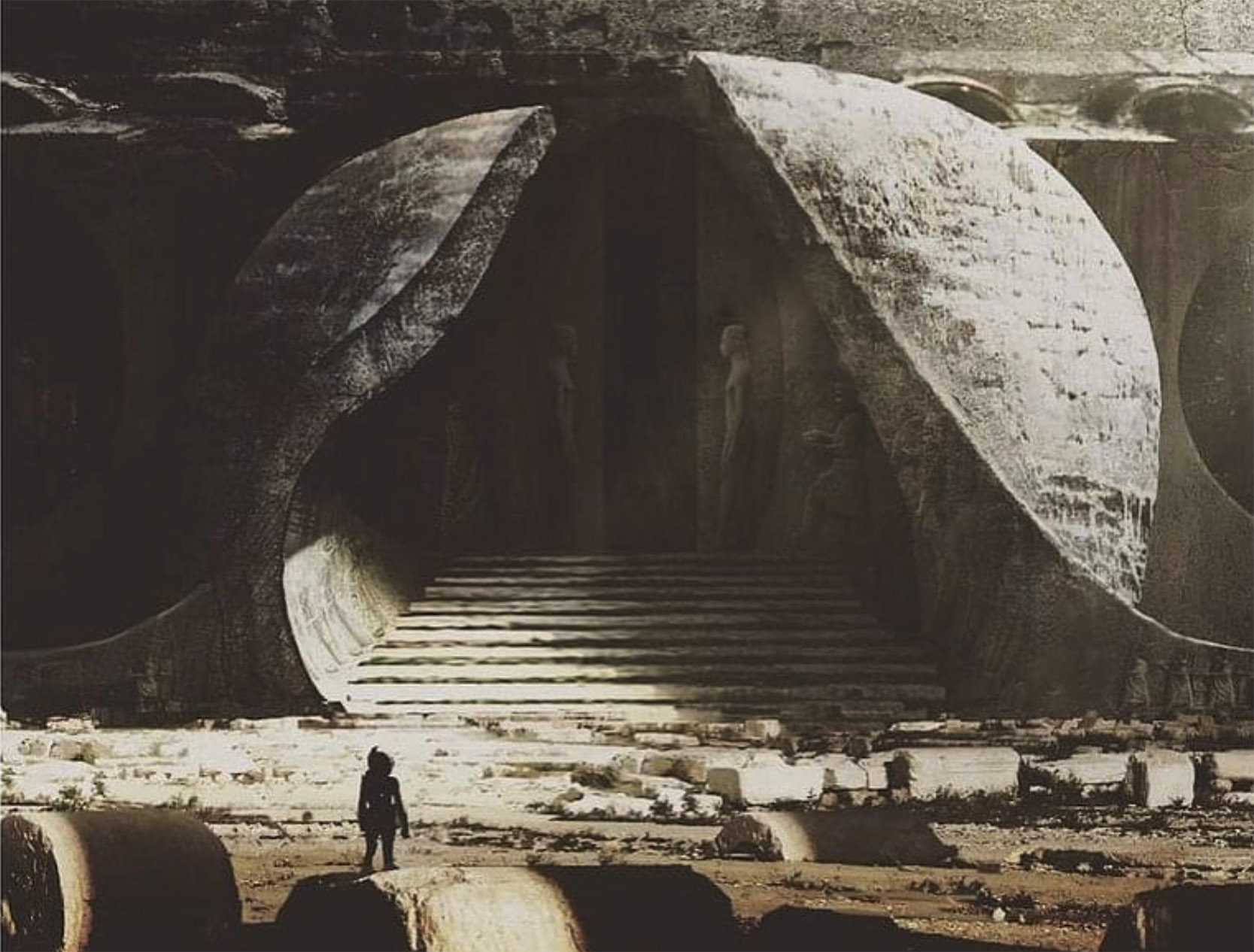ARCHIPELAGO, 3.3: Storytelling, Activism, Re-Building
ARC3020Y F
Instructor(s): Petros Babasikas | Petros.Babasikas@daniels.utoronto.ca
Meeting Section: L0104
Tuesday, 9:00am - 1:00pm, 2:00pm - 6:00pm
The Archipelago Studio is an ongoing design research project at the Daniels Faculty. It contains a body of MArch Thesis projects, essays and visual essays, drawings and models. Each iteration of the studio is experimental and developed from the previous one. All explore a method for producing Architecture against Crisis.
Here is the Archipelago Studio’s latest version.

Crisis: NASA, Siberian Forest Fires, Summer 2021
The Archipelago Studio is based on the following assumptions:
1. We must redefine our notion of Site. Site is not a plot but a network – a mesh of actors, vectors, fields and objects. Not control, mastery, tabula rasa, but allyship, relationality, working with what we have. The urban, social, ecological crises of our time are slow and invisible, popping across the globe, across cities, in catastrophic bursts. The Archipelago method is an entry to this. It allows us to visualize and project within a complex network of relations, a field of objects and events.
2. Describing a Crisis is not enough. We need to find ways to act against it. To do so, it helps to find an Agent: an organization, or synergy of institutions driving social, urban, environmental change. This agent becomes a close friend to our project, helping us reinvent its architecture. This way we also redefine our notion of Program, not as function, service, optimization, but as footprint, motivation, and impact for our architecture. We mediate between larger infrastructures and resources and local groups.
3. An architecture against, or despite, different Crises cannot save the world, but it can drive change: social justice, integration, conservation, renewal, shelter, sanctuary, public space. A thesis can be aligned with these goals. By research through making – storytelling, agent-building (activism), and re-building, it becomes a project.

Sanctuary: Jun’ya Ishigami’s Water Garden, 2018
4. Our architecture may engender spaces of freedom and joy. Those spaces will be memorable, icons, sanctuaries and pilot projects against the Crisis.
Based on these assumptions, the Archipelago studio provides an open template for students to do their own thing. Students will consider different Crises, across different global sites, produce different works of architectural storytelling, finding different agents and partnerships, re-building composite models or drawings, as follows:
PART 1: Storytelling
September – November 2022

Storytelling: Irina Rouby-Apelbaum, Jia Jia Shi, Ivy Chan, Stephanie Tung, Atieh Daneshian, Athens Model/Map, Archipelago Studio 2020.
Students build their thesis topic using narrative methods. They explore a site as a story and conduct field or archival research. They use found footage, testimonies, geographic information; they make maps, build models, film them, take them out into the rain. They produce a time-based narrative – a visual essay, or design fiction – organizing their findings, distilling their positions into a thesis. Its logic will be montage, featuring a strong architectural language. How can architecture and its media respond to a world in crisis?
PART 2: Activism (agent-building)
November – December 2022 Students invent a possible agent or contact an actual organization driving social, urban, or environmental change. This can be an NGO, a cooperative, an independent group, or an institution active, invested, intensely working in their site. By its mandate, they define the nature of their partnership, focusing and making their thesis relevant. They ‘get dirty’ with their chosen site, adding chapters, interviews, maps or speculations to their visual essay. This allows them to produce a first sketch of their thesis project. Is architectural activism an architecture without architects?
PART 3: Re-Building
January – February 2023

Re-Building: Ljubomir Denković, Monument to the Revolution, Grmeč, Bosnia & Herzegovina, 1979, and Steven Messing, Alien Covenant Concept Art, 2017
Students design or re-adapt a building for their agent. They may also design a network of interventions, an Archipelago of public spaces, machines or modules across multiple locations, a net of routes, etc. They produce models and drawings. They consider these battered by a current crisis; so they un-build and re-build their project, in its debris. The project now includes unexpected pieces. What does it mean to build and un-build a project?
PART 4: Exhibition
February – April 2023
Students re-frame their visual essays, design fictions, agents, buildings and networks, against their thesis, making new drawings, models and atlases saying less rather than more. This final stage remakes their early work of storytelling as a work of architecture, framed in a specific exhibition design for their final review. The Archipelago Studio is not about growth, but about conservation, rebuilding, mediation, working with what we have.
*** An optional Studio Trip to Greece will be scheduled as part of the course. Two case studies of Storytelling, Activism, and Re-Building Architecture vs. Crisis will be closely documented: a series of artist- or activist-run spaces in Athens, and the Aegean Marine Life Sanctuary, by the Archipelago Institute of Marine Conservation in the island of Leipsoi

